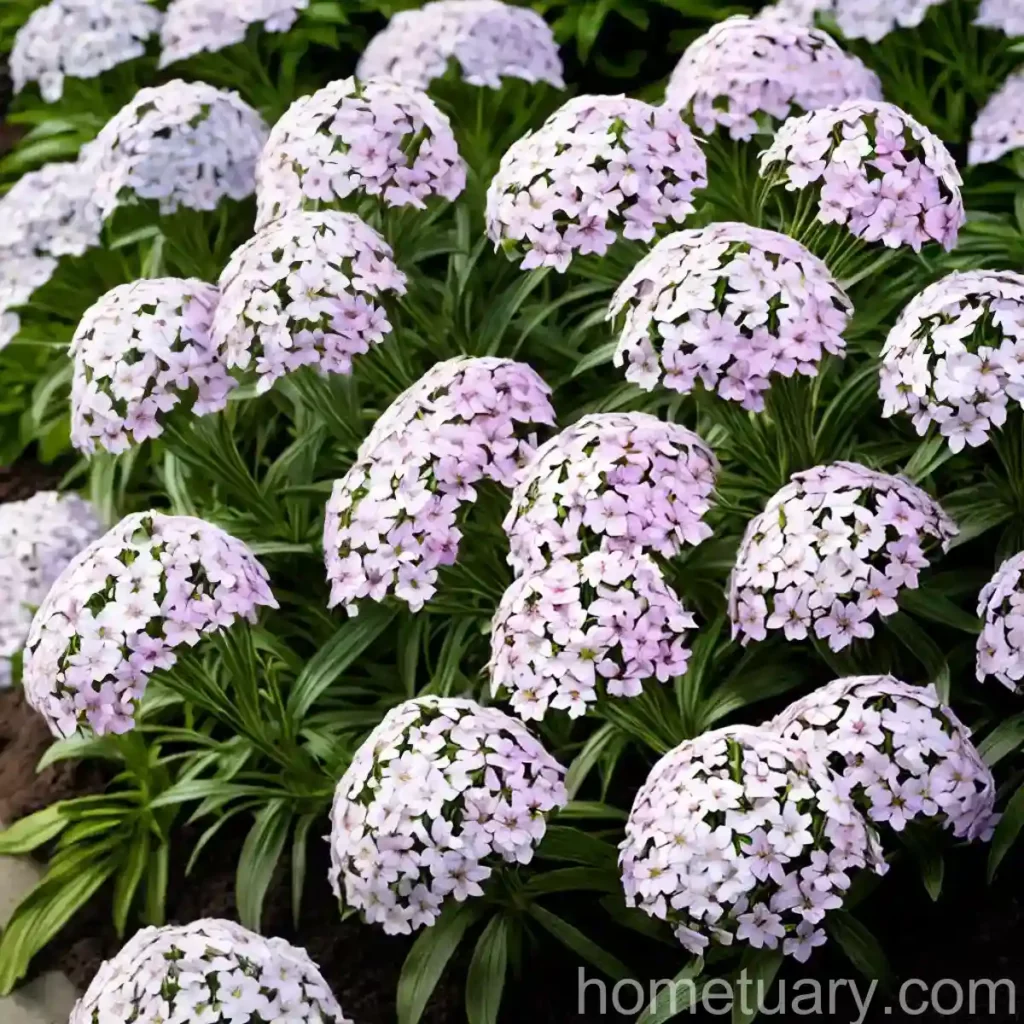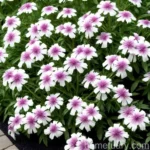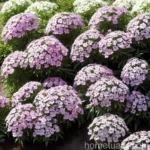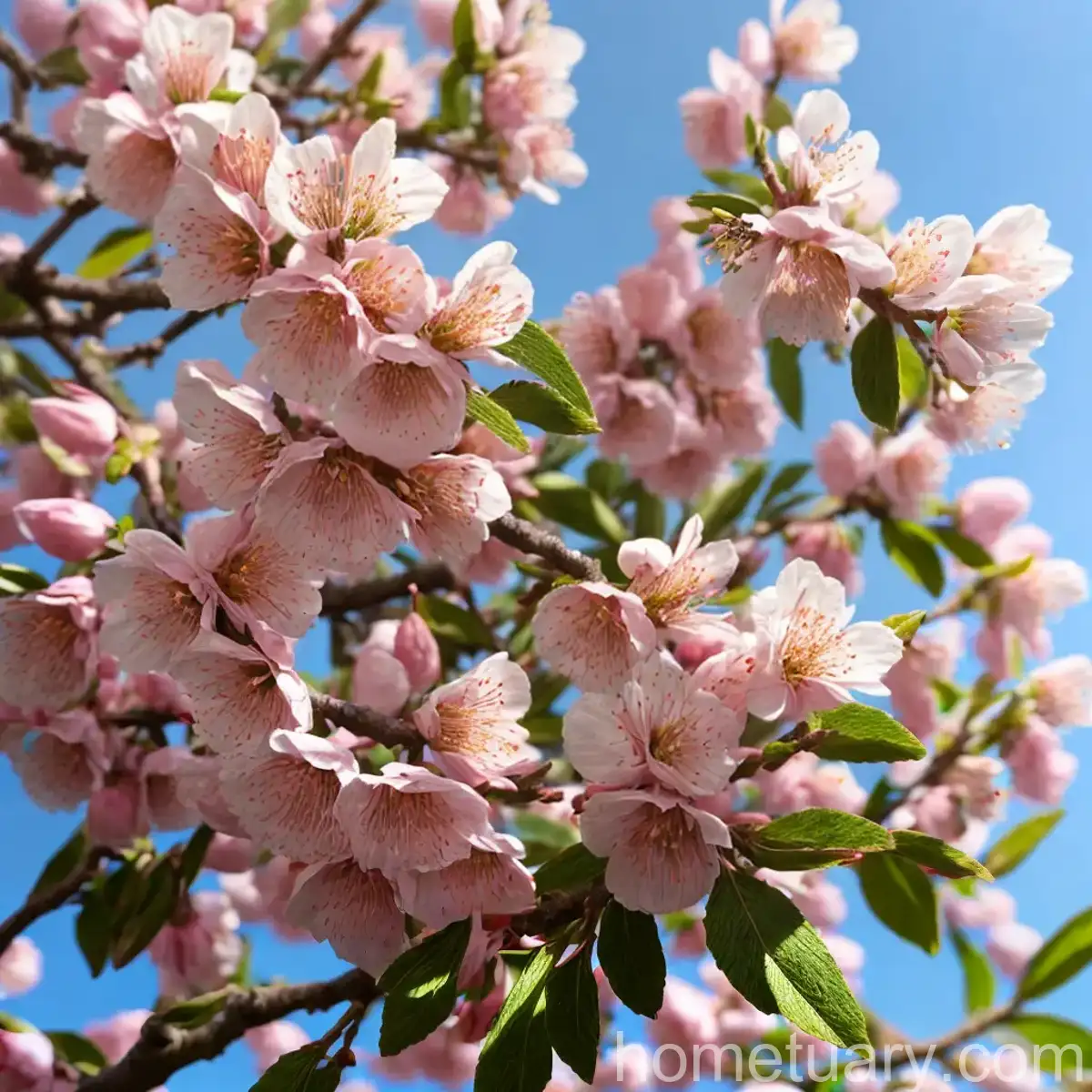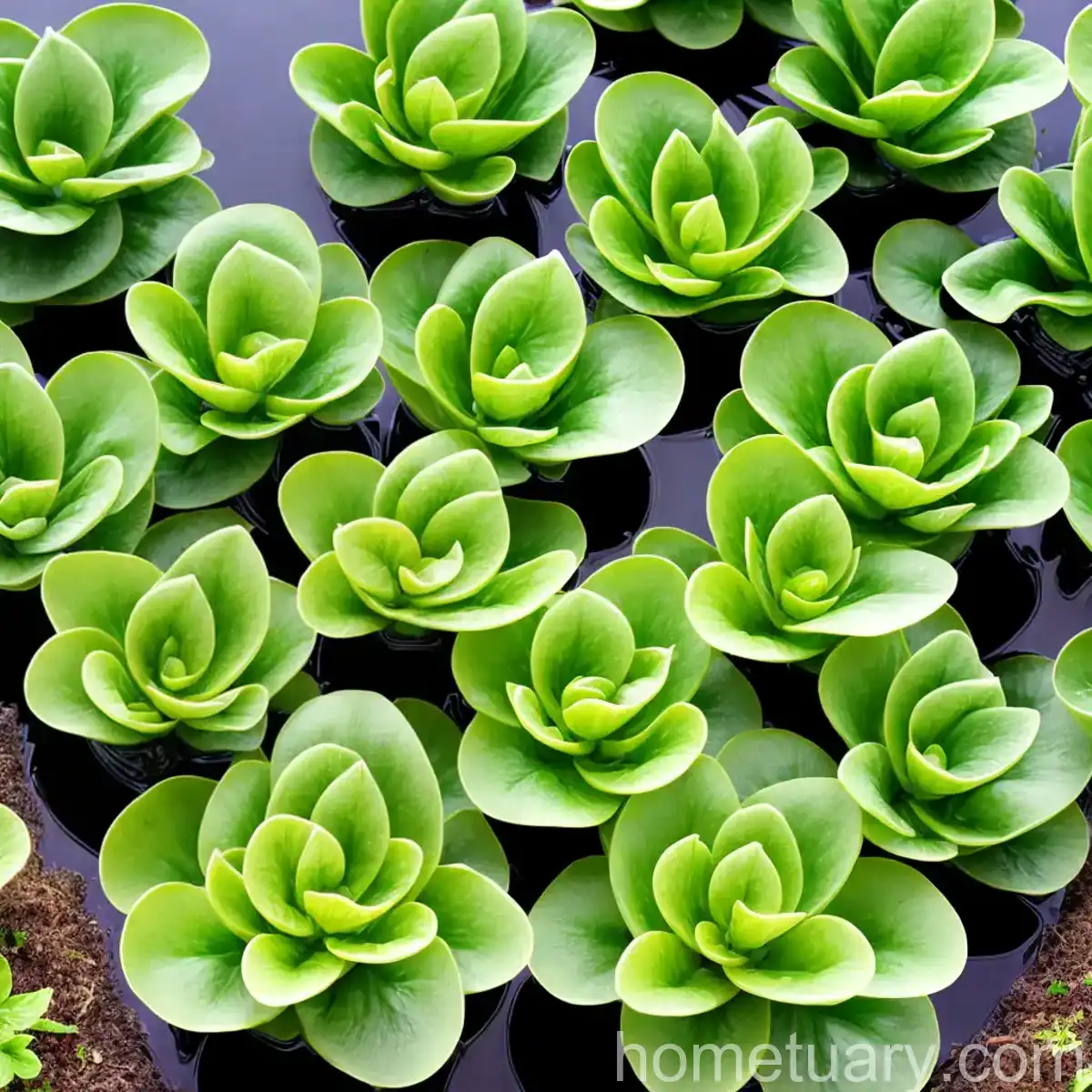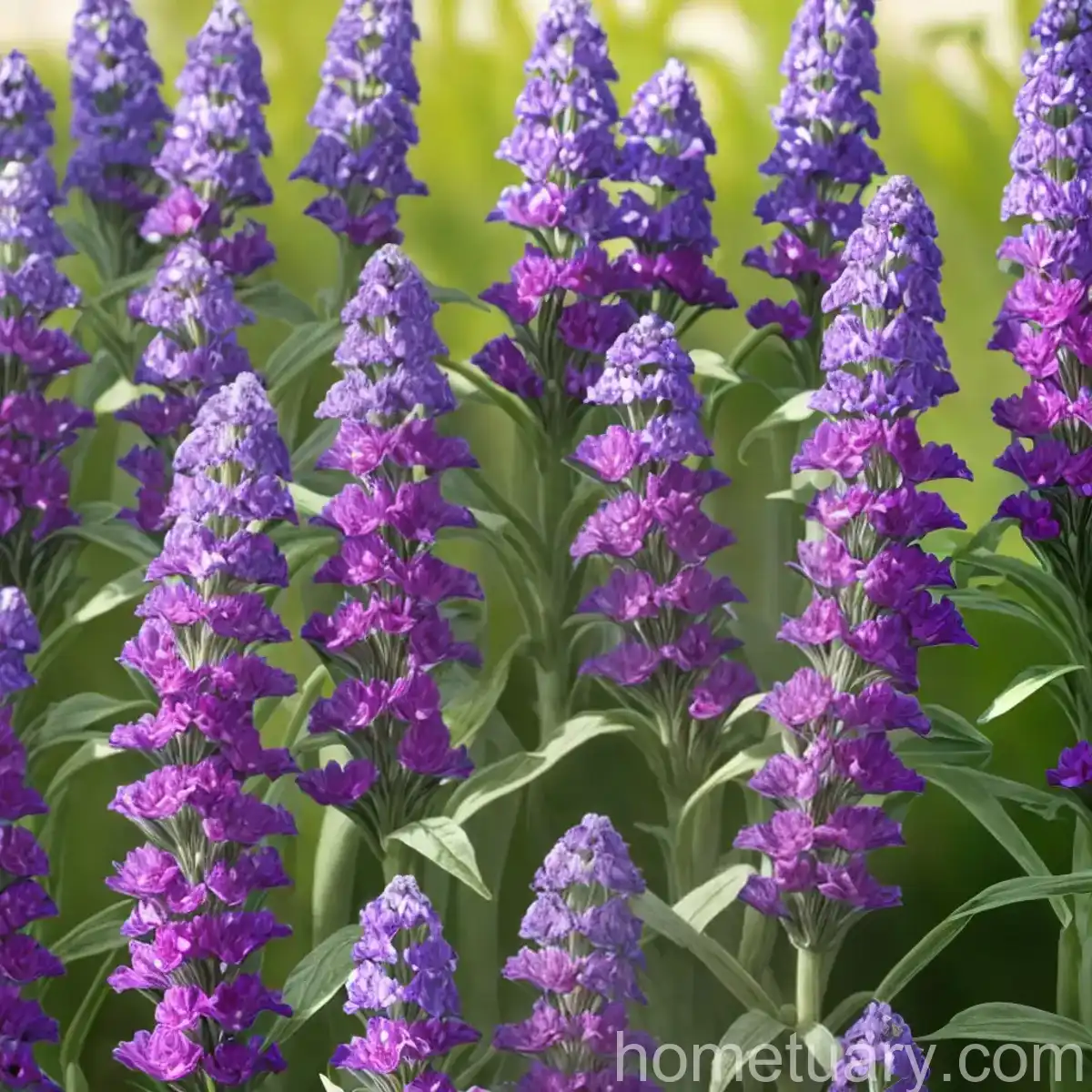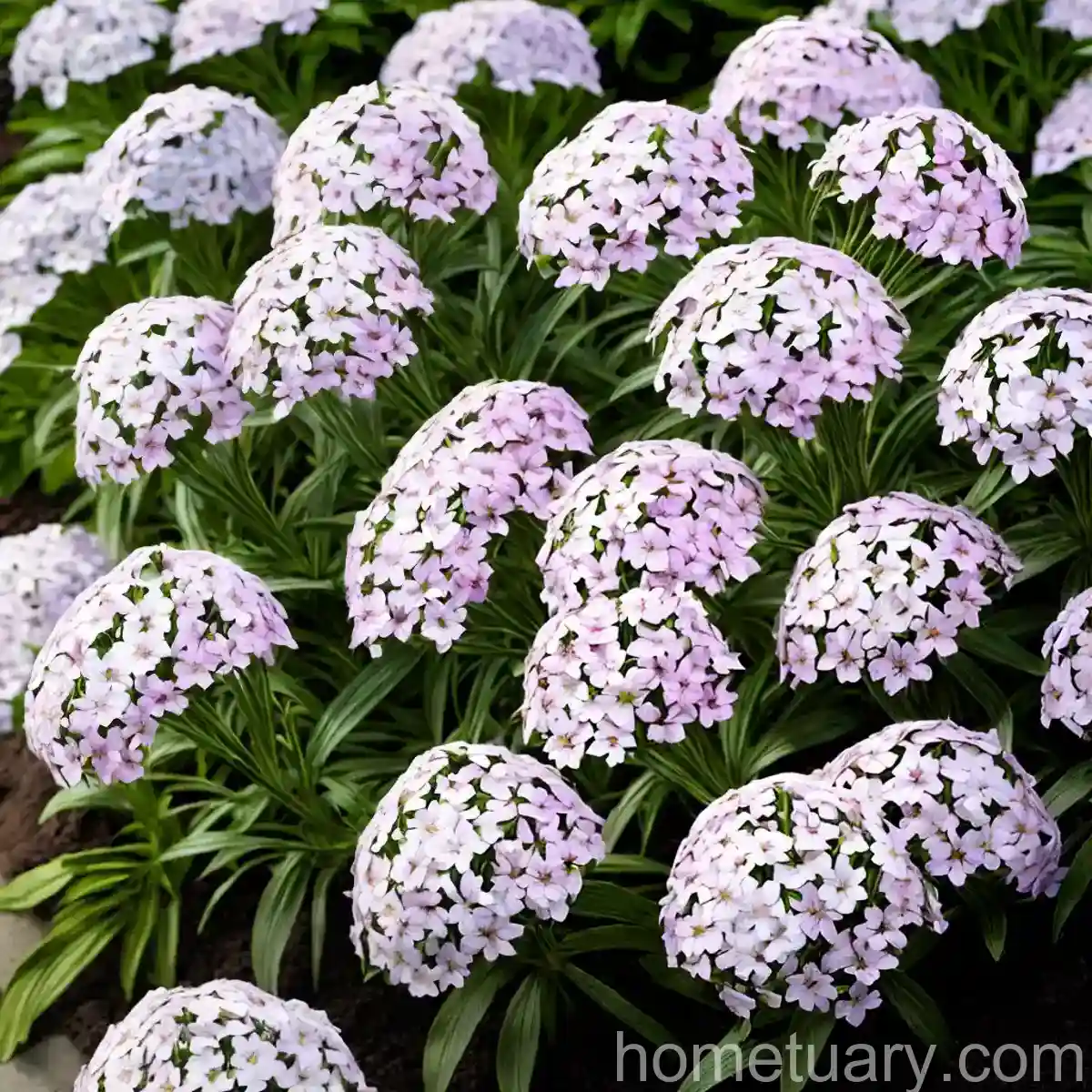Garden Phlox (Phlox paniculata ‘Shortwood’) – A Complete Guide
Garden phlox, scientifically known as Phlox paniculata ‘Shortwood’, is a stunning perennial known for its beautiful clusters of colorful flowers and pleasant fragrance. This plant is a favorite among gardeners for its low maintenance and ability to attract pollinators, making it a popular addition to any garden or landscape.
In this comprehensive guide, we will delve into the various aspects of garden phlox care, including its cultural requirements, uses, propagation, common diseases, pests, and much more. Whether you’re a seasoned gardener or a beginner, this detailed resource will equip you with the knowledge to grow and care for garden phlox successfully.
What is Garden Phlox (Phlox paniculata ‘Shortwood’)?
Garden phlox, or Phlox paniculata ‘Shortwood’, is a herbaceous perennial plant that belongs to the Polemoniaceae family. It is native to North America and is renowned for its dense clusters of fragrant, vibrant flowers that bloom in summer. The ‘Shortwood’ variety is known for its compact growth habit and stunning flower colors, making it a sought-after choice for gardens and landscapes.
The plant typically reaches a height of 2 to 4 feet and spreads about 2 to 3 feet wide, creating a lush, vibrant display when in full bloom. Its long, lance-shaped leaves add to the overall aesthetic appeal, and the flowers come in an array of colors, including shades of pink, lavender, white, and red.
Key Takeaways – Garden Phlox (Phlox paniculata ‘Shortwood’)
Before we dive into the specifics of garden phlox care, let’s summarize some key takeaways about this delightful plant:
- Botanical Name: Phlox paniculata ‘Shortwood’
- Plant Type: Herbaceous perennial
- Mature Height: 2-4 feet
- Mature Spread: 2-3 feet
- Flower Colors: Pink, lavender, white, red
- Fragrance: Pleasant, sweet fragrance
- Best Suited For: Gardens, landscapes, pollinator gardens
- Growth Habit: Dense, compact
- Preferred Growing Zones: 4-8
- Attracts: Bees, butterflies, hummingbirds
- Maintenance: Low to moderate
With these key points in mind, let’s explore the cultural requirements, maintenance tips, and other essential aspects of growing and caring for garden phlox.
Culture
Understanding the cultural requirements of garden phlox is essential for ensuring its optimal growth and prolific flowering. This section covers various aspects such as water, sunlight, fertilizer, soil, and pruning, providing a comprehensive overview of the plant’s needs.
Water
Proper watering is crucial for the health and vitality of garden phlox. While the plant is somewhat tolerant of drought conditions, it thrives best when provided with consistent moisture, especially during the hot summer months. For newly planted garden phlox, regular watering is essential to help establish a strong root system.
Watering Guidelines:
- Newly Planted Phlox: Water deeply after planting, and continue to water regularly for the first few weeks to promote healthy establishment.
- Established Phlox: Provide 1 inch of water per week, either through rainfall or supplemental irrigation, particularly during dry spells.
- Avoid Overwatering: While garden phlox appreciates moisture, it is important to avoid waterlogged soil, which can lead to root rot and other issues.
Maintaining a consistent watering schedule, especially during periods of heat and drought, will help garden phlox thrive and continue producing abundant blooms.
Sunlight
Garden phlox is known for its preference for sunlight, and it flourishes in bright, sunny locations that receive at least 6 to 8 hours of direct sunlight per day. Adequate sunlight is essential for promoting robust growth, vibrant blooms, and overall plant health. In regions with particularly hot summers, some afternoon shade can be beneficial to prevent the plant from becoming stressed or scorched.
Sunlight Requirements:
- Full Sun: Ideally, plant garden phlox in a location that receives full sun for the majority of the day.
- Partial Shade: In areas with intense afternoon sun or high temperatures, providing partial shade during the hottest part of the day can benefit the plant.
- Sun-Tolerant: While garden phlox appreciates sunlight, it is adaptable and can thrive in a variety of light conditions.
By ensuring the plant receives sufficient sunlight and, when necessary, providing protection from intense afternoon sun, garden phlox will reward you with an abundance of blooms throughout the summer.
Fertilizer
Feeding garden phlox with the right nutrients is essential for promoting healthy growth, strong flowering, and overall vigor. While garden phlox is relatively low-maintenance when it comes to fertilization, providing some supplemental nutrients can enhance its performance and ensure its long-term health.
Fertilizer Guidelines:
- Balanced Fertilizer: Use a balanced, slow-release fertilizer formulated for flowering perennials in early spring as new growth emerges.
- Application Rate: Follow the manufacturer’s recommendations for application rates, and avoid over-fertilizing, which can lead to excessive foliage growth at the expense of flowers.
- Organic Options: Organic fertilizers, such as compost or well-rotted manure, can be used as an alternative to synthetic fertilizers for a more natural approach.
By providing garden phlox with a balanced feeding regimen, you can support its overall health and promote a prolific display of colorful blooms throughout the growing season.
Soil
The type of soil in which garden phlox is planted plays a significant role in its growth and performance. Well-drained, fertile soil with a slightly acidic to neutral pH is ideal for this plant. Additionally, incorporating organic matter into the soil can improve its structure, fertility, and water retention capabilities.
Soil Requirements:
- Well-Drained: Ensure the planting site has well-drained soil to prevent waterlogging, which can lead to root rot and other issues.
- Fertility: Amend the soil with compost or organic matter to enhance its fertility and provide essential nutrients to the plant.
- pH Level: Aim for a slightly acidic to neutral pH range of 6.0 to 7.0 for optimal growth and nutrient uptake.
By choosing a well-drained, fertile soil and amending it with organic matter as needed, you can create an ideal growing environment for garden phlox, setting the stage for healthy, vigorous growth.
Pruning
Pruning garden phlox is an important aspect of its maintenance, helping to promote a tidy appearance, encourage additional blooms, and prevent issues such as powdery mildew. Proper pruning techniques, including deadheading and occasional thinning, can contribute to the plant’s overall health and aesthetic appeal.
Pruning Guidelines:
- Deadheading: Remove spent blooms regularly to encourage continuous flowering and prevent the plant from expending energy on seed production.
- Thinning: Periodically thin out crowded stems and remove any weak or damaged growth to improve air circulation and reduce the risk of disease.
- Cutting Back: After the initial bloom period, consider cutting back the foliage and flower stems to promote a potential second wave of blooms later in the season.
Practicing regular maintenance pruning will not only keep garden phlox looking its best but also contribute to its long-term health and vitality.
Uses
Garden phlox is a versatile plant with a range of uses in gardens, landscapes, and even floral arrangements. Its vibrant blooms, pleasant fragrance, and ability to attract pollinators make it a valuable addition to various settings, from formal gardens to naturalistic landscapes.
Garden and Landscape Use
Garden phlox shines as a focal point or accent plant in garden beds, borders, and mixed perennial displays. Its tall, upright growth habit and colorful blooms create a striking visual impact, particularly when planted in groups or drifts. Additionally, its attractiveness to bees, butterflies, and hummingbirds makes it a popular choice for pollinator gardens, where it contributes to the overall biodiversity and ecological balance of the area.
Common Garden Uses:
- Mixed Borders: Plant garden phlox as part of mixed borders, alongside other perennials, shrubs, or ornamental grasses, to add vibrant color and vertical interest.
- Pollinator Gardens: Incorporate garden phlox into pollinator-friendly gardens to attract and support beneficial insects and wildlife.
- Cut Flower Gardens: Harvest the blooms for use in cut flower arrangements, where their vibrant colors and sweet fragrance can be enjoyed indoors.
With its versatility and aesthetic appeal, garden phlox is a valuable addition to a wide range of garden styles and settings, bringing color, fragrance, and ecological benefits.
Floral Arrangements
The attractive blooms of garden phlox make it an excellent choice for incorporating into floral arrangements, adding a pop of color and a delightful fragrance. Whether used as a standalone focal flower or combined with other blooms, the versatility of garden phlox in floral design makes it a popular choice for cut flower gardens and floral enthusiasts.
Floral Use Tips:
- Harvesting: Cut garden phlox stems with sharp, clean pruners when the flowers are at their peak and place them in a bucket of water immediately.
- Supportive Foliage: Remove any lower foliage that will be submerged in water to prevent bacterial growth, and trim the stems at an angle before arranging them in a vase.
- Complementary Flowers: Combine garden phlox with other garden favorites such as zinnias, dahlias, and asters to create a vibrant, multi-textured arrangement.
By incorporating garden phlox into floral arrangements, you can enjoy its beauty and fragrance indoors while also extending the life of the blooms beyond their garden display.
Propagation
Propagating garden phlox allows you to expand your plant collection, share this stunning perennial with others, and rejuvenate older plantings. This section covers the methods of propagating garden phlox, including division and seed sowing, providing you with options for increasing your garden’s phlox population.
Division
Dividing garden phlox is a straightforward and effective method of propagation, especially for mature plants that have become overgrown or need rejuvenation. Dividing the plant every few years also helps maintain its vigor, promote healthy growth, and control its size.
Division Guidelines:
- Timing: Divide garden phlox in early spring before new growth emerges or in early fall after the plant has finished flowering.
- Plant Preparation: Water the plant thoroughly a day or two before division to ensure the roots are well-hydrated and easier to work with.
- Dividing: Carefully dig up the plant, making sure to include a generous portion of the root system, and use a sharp knife or garden spade to separate the clump into smaller sections.
- Replanting: Replant the divided sections in prepared soil, water them well, and provide appropriate care to encourage strong establishment.
By dividing garden phlox, you can maintain the health and vitality of the plant, create new plantings, and rejuvenate existing ones, contributing to a thriving garden display.
Seed Sowing
Growing garden phlox from seed is another viable propagation method, allowing you to cultivate new plants and explore a wide range of potential flower colors and characteristics. While it requires some patience and careful attention to detail, sowing garden phlox seeds is a rewarding way to expand your garden’s phlox collection.
Seed Sowing Steps:
- Seed Collection: Allow the spent flowers to develop seed heads, then collect the mature seeds and store them in a cool, dry place until you are ready to sow them.
- Indoor Sowing: Start the seeds indoors about 8-10 weeks before the last expected frost date, using a sterile seed-starting mix and providing a warm, bright environment.
- Outdoor Sowing: Directly sow the seeds outdoors in late spring or early summer after the danger of frost has passed, choosing a well-prepared planting area with good soil contact and consistent moisture.
- Seedling Care: Provide the seedlings with adequate water, sunlight, and protection from extreme conditions as they germinate and establish themselves.
By sowing garden phlox seeds, you can introduce new varieties, experiment with different colors, and enjoy the gratifying experience of growing plants from seed, adding an exciting dimension to your garden activities.
Container Popularity
While garden phlox is commonly grown in garden beds and borders, it also thrives in containers, offering a versatile option for those with limited garden space or a preference for container gardening. This section explores the appeal of growing garden phlox in containers and provides insight into the best practices for doing so.
Benefits of Container Culture
Growing garden phlox in containers presents several advantages, making it an appealing option for gardeners looking to incorporate this beautiful perennial into their outdoor spaces.
Advantages of Container Gardening:
- Space Efficiency: Containers allow you to grow garden phlox in small spaces, such as patios, balconies, or urban gardens, where traditional planting areas may be limited.
- Controlled Environment: Containers provide greater control over soil quality, drainage, and exposure to sunlight, enabling you to create an ideal growing environment for the plant.
- Versatility: Moveable containers offer the flexibility to showcase garden phlox in different locations, rearrange your outdoor space, or protect the plant from adverse weather conditions.
With the benefits of container gardening, garden phlox becomes accessible to a wider range of gardeners, offering opportunities to enjoy its beauty and fragrance in diverse settings.
Container Considerations
When selecting containers for garden phlox, it is important to choose options that provide adequate space for the plant’s root system, good drainage, and stability. Additionally, using high-quality potting mix and incorporating regular maintenance practices can contribute to the success of growing garden phlox in containers.
Container Guidelines:
- Size: Choose containers that are at least 12-16 inches in diameter and depth to accommodate the plant’s mature size and root system.
- Drainage: Ensure the containers have drainage holes to prevent waterlogging and maintain healthy root conditions.
- Potting Mix: Use a well-draining, high-quality potting mix formulated for perennial plants, or create a custom mix using components such as perlite, peat moss, and compost.
- Maintenance: Provide regular water, appropriate sunlight, and periodic fertilization to support the plant’s growth and flowering in the container.
By carefully selecting containers, using quality potting mix, and providing ongoing care, you can successfully grow garden phlox in containers, bringing its charm and beauty to a variety of outdoor spaces.
Common Diseases
While garden phlox is generally a resilient and low-maintenance plant, it is susceptible to certain diseases that can impact its health and appearance. Familiarizing yourself with these common diseases and their symptoms is essential for early detection and prompt intervention to protect your garden phlox.
Disease Diagnosis
Several diseases can affect garden phlox, manifesting as visual symptoms on the foliage and stems. Understanding these diseases and their associated signs can help you identify and address potential issues in a timely manner.
Common Diseases:
- Powdery Mildew: Characterized by the appearance of white, powdery spots on the upper surface of the leaves, powdery mildew can lead to leaf distortion and premature leaf drop if left unchecked.
- Botrytis Blight: Also known as gray mold, this fungal disease causes brown lesions on the leaves and flower stems, often accompanied by a fuzzy gray fungal growth.
- Septoria Leaf Spot: Identified by the presence of small, dark spots with a tan or gray center on the foliage, septoria leaf spot can lead to leaf yellowing, browning, and defoliation.
- Root Rot: Excessive moisture or poorly drained soil can contribute to root rot, resulting in yellowing, wilting, and eventual collapse of the plant’s foliage.
By recognizing the symptoms of these common diseases, you can take the necessary steps to manage and prevent their impact on your garden phlox, promoting the plant’s overall health and longevity.
Common Pests
In addition to diseases, garden phlox may also attract certain pests that can affect its growth and appearance. Awareness of these common pests and their behavior can help you implement effective control measures and protect your garden phlox from potential damage.
Common Pests:
- Spider Mites: These tiny arachnids can cause stippling, discoloration, and webbing on the leaves, often leading to diminished plant vigor and unsightly foliage.
- Aphids: Small, soft-bodied insects that feed on plant sap, aphids can cause distorted growth, yellowing leaves, and the development of sticky honeydew residue.
- Thrips: Thrips can cause silvery or bronzed stippling on the leaves, as well as distorted flower buds, reducing the overall aesthetic quality of the plant.
- Slugs and Snails: These mollusks can feed on the foliage and flowers of garden phlox, leaving behind irregular holes and damage, particularly in areas with high humidity.
By monitoring for these common pests and implementing appropriate control strategies, such as cultural practices, natural predators, or targeted treatments, you can safeguard the health and appearance of your garden phlox.
Botanist’s Tips
Here are some additional tips to enhance the overall care and performance of garden phlox, based on the insights of botanists and experienced gardeners:
- Regular Monitoring: Keep a watchful eye on your garden phlox for any signs of disease, pest infestations, or environmental stress, and address any issues promptly to prevent escalation.
- Supportive Companions: Pair garden phlox with complementary plants such as coneflowers (Echinacea), salvias, and bee balms (Monarda) to create visually appealing and ecologically beneficial combinations in the garden.
- Mulching Benefits: Apply a layer of organic mulch around garden phlox to conserve moisture, suppress weed growth, and maintain a consistent soil temperature, supporting the plant’s overall health.
These expert tips, in conjunction with the foundational cultural practices, can contribute to the long-term success and vitality of your garden phlox.
Fun Facts
Here are some intriguing and delightful facts about garden phlox to deepen your appreciation for this captivating perennial:
- Historical Significance: Indigenous tribes in North America traditionally used the roots of garden phlox for medicinal purposes, including as a remedy for treating skin conditions and infections.
- Fragrance Refinement: The fragrance of garden phlox is known to be particularly appealing to moths, which are attracted to the blooms in the evenings, contributing to the plant’s pollination.
- Cultural Symbolism: Garden phlox is associated with qualities such as harmony, partnership, and unity in traditional floriography, or the language of flowers.
- Perennial Longevity: With proper care, garden phlox can live for numerous years, providing continued beauty and ecological benefits in the garden.
These fun facts offer a glimpse into the unique characteristics, historical significance, and cultural symbolism of garden phlox, enriching the experience of growing and appreciating this delightful perennial.
Links to External Resources
For further information, resources, and inspiration related to garden phlox care and cultivation, here are some valuable external links:
- Phlox paniculata ‘Shortwood’ Care Guide – RHS
- [Growing Garden Phlox – University of Florida IFAS Extension](http://gardeningsolutions.ifas.ufl.edu/plants/ornamentals/gardening-with-perennials/

